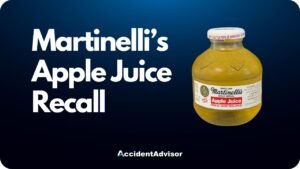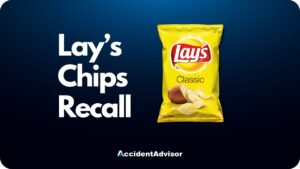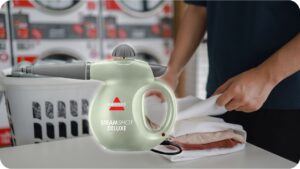Companies have a legal responsibility to ensure that their products are safe when used as advertised or they’re subject to a defective product lawsuit. Failure to meet basic standards can result in injuries that an individual and their attorney can use as evidence in a personal injury case.
If you believe that you or someone you know was harmed by a defective product, you may be wondering how to file a defective product lawsuit. You are within your legal right to receive compensation for damages and injuries resulting from product defects, including medical bills, loss of income, pain and suffering, and more.
Legal actions against these companies fall under the broad category of product liability cases. Since they can be complicated to understand and file, we created this guide to help you learn more about your eligibility for a defective product lawsuit.
Table of Contents
What is a Defective Product
It’s important to clarify what we mean by a “defective product.” In the broad sense, a product that injures a consumer or causes an illness is defective, though there is some grey area in that definition.
Some products may be harmful by nature, such as pesticides or flammable gasses. In some cases, the advertising and labeling of the product plays a role in determining whether the company or the consumer was to blame for the injury sustained.
Importantly, being disappointed in the effectiveness of a product does not constitute grounds for a defective product lawsuit. This includes products that do not work as advertised, such as an insect repellent that fails to resolve your problem.
This may not be the fault of the product and its manufacturer. To be deemed truly defective, a product must cause injury to its user when used in the advertised way.
Product Defect Statistics
Every year, nearly 12 million emergency room visits are for injuries caused by products, according to the National Safety Council. Not all these products are defective. But with product liability insurance steadily increasing in cost over the last decade, defective product lawsuits are becoming more common and costly.
The most common product-related injuries occur from stairs and ramps, followed by beds, mattresses, chairs, and sofas. However, any product can be the focus of a product liability lawsuit.
How to Catch Defects in a Product
Product inspection and quality control should be major aspects of a product’s development. However, sometimes it’s up to the consumer to discover quality issues, either through injury or observation.
The best way to understand how to catch product defects is to separate them into three categories: minor, major, and critical.
A minor defect does not affect the product’s functionality. Minor defects are usually in appearance only, such as a color change, a misprinted label, or minor aesthetic damage. A defective product lawsuit does not deal with minor defects since they don’t affect the product’s usability and therefore won’t cause an injury.
The same can’t be said for major defects. While a piece of clothing may be defective by having an open seam or other issues, chemical, structural, or electrical products with such defects can be dangerous. For example, a power pack may not have the voltage indicated on the label, potentially causing an overload.
Critical defects are the most serious and therefore the most likely to result in a defective product lawsuit. An electrical product that fails to pass safety tests can cause electrical shocks or overloads. Toys can contain broken needles or chemicals. Containers may be contaminated with chemicals, blood, bugs, or other unsafe objects.
Not all product defects are grounds for a lawsuit since not all of them can cause illness or injury. However, critical defects, which impact not only the product’s usability but also its safety, are often the beginning of such a case.
Product Defect Liability
To make a winning case for an injury you sustained while using a product, you should understand the basics of product defect liability. The liability for a defective product could fall on the manufacturer, seller, or both. The compensation in a case involving a defective product could go to the consumer, a family member, or even a bystander, depending on the type of damage sustained.
Product defect liability legally compels compensation for buyers of defective products, but the case is rarely open and shut. The manufacturer or seller will attempt to claim that the product was not used in the intended way when the injury was sustained while the injured party (the plaintiff) will attempt to prove that a product defect caused their injury.
Product liability is a branch of civil law rather than criminal law, which makes it easier for injured consumers to prove their case with evidence. They only have to prove the general likelihood of their injuries rather than the absolute certainty.
How Defective Product Fraud Happens
Defective product fraud, also called consumer fraud, is not the same as product liability, though the cases can overlap. The main difference is intent and foreknowledge. If a manufacturer or seller knew about the product defect before selling it, they could be sued for defective product fraud.
Since not all defects are known by the manufacturer, not all product liability cases involve fraud. Fraud cases are more complicated since the plaintiff has to prove the manufacturer’s knowledge and intent to commit fraud while liability only requires proof of the injuries sustained.
Defective Product Lawsuit
Figuring out the liability in your specific case can be complicated. In legal terms, the “chain of distribution” has to be examined to determine who is at fault for the product’s defect. The resulting case may be filed against multiple defendants or even a foreign distributor, potentially complicating the process.
In general, three potential parties can be sued in a defective product lawsuit: manufacturers, distributors, and retailers.
Suits involving the manufacturer, potentially including the product’s designers and marketers, name the brand itself as the plaintiff. By contrast, suits against the distributor look down the chain of distribution for liability in how the products were processed and sold.
Finally, the retailer that sold you the product may be liable for its defects. Note that you don’t have to be the buyer or even the user of the product to make this case. Additionally, you don’t have to choose only one of these defendants in your defective product lawsuit.
Defective Product Settlements and Compensation
Defective product settlements result in an average compensation of $748,000, according to Forbes. The number is high because these cases often have multiple high-profile defendants with the means to compensate for serious injuries.
They have included many high-profile cases involving damages caused by diverse defective products (see below). Compensation is based not only on the victim’s medical bills but also on their projected future medical costs, loss of wages, and pain and suffering.
Pain and suffering in a product liability case includes a victim’s loss of quality of life, loss of potential, depression, strained family relationships, and more. Pain and suffering are represented as a multiplier that you and your attorney should discuss in terms of the compensation that you can verify with various sources of evidence, including doctor’s notes, police reports, testimony, and anything else they deem relevant.
Popular Defective Product Cases
In the last few years, there have been some high-profile defective product lawsuits that are still ongoing. These cases have involved numerous plaintiffs and defendants and have resulted in millions or even billions of dollars in compensation for the victims of product defects.
Here’s a brief breakdown of some of the most popular defective product cases.
Roundup Lawsuit
The Roundup weed killer lawsuit is one of the most high-profile product liability cases. The suits against the glyphosate-based pesticide claim that long-term use leads to an increased risk for cancers such as non-Hodgkin’s lymphoma.
Over 100,000 lawsuits have been filed against the manufacturer, Monsanto/Bayer, resulting in over $10 billion in damages paid to victims of Roundup pesticide.
3M Earplugs Lawsuit
The manufacturer 3M has been under fire in an ongoing earplug lawsuit against their protective CAEv2 earplugs. The devices were designed for use by the military to protect soldiers’ ears from explosions and routine training noise while allowing them to hear command dialogue at the same time.
In 2016, it was discovered that 3M’s design did not adequately fit every user’s ear, resulting in sound exposure that can eventually cause tinnitus and hearing loss. It has been suggested that 3M knew about the defect, leading many to claim product fraud as well as liability.
Talcum Powder Lawsuit
The Johnson and Johnson talcum powder lawsuit is another high-profile product liability case. This one involves baby powder products by the venerated manufacturer, whose base ingredients were mined too close to sources of asbestos.
The result is cancer-causing contamination of many health and beauty products, including baby powder, resulting in a total settlement amount of over $4 billion in damages to the victims so far.
NEC Baby Formula Lawsuit
The NEC baby formula lawsuit refers to a group of defective product lawsuits against the Similac and Enfamil brands of baby formula. NEC or necrotizing entercolitis is an inflammation of intestinal tissue that is especially dangerous for premature babies.
The lawsuits against Similac and Enfamil revolve around claims that the manufacturers failed to inform parents about the known risks of cow milk-based formulas in premature babies.
Paraquat Lawsuit
The Paraquat lawsuit is very similar to the Roundup lawsuit discussed previously. Paraquat is also a chemical herbicide used to kill weeds and other invasive plants. The weed killer is fatal if ingested, but plaintiffs state that the product is also dangerous even when used as directed.
Unlike Roundup, which has been linked to cancer, Paraquat claims center around other chronic conditions such as Parkinson’s, kidney disease, and pulmonary fibrosis.
Zantac Lawsuit
The Zantac lawsuit is a product liability case against the manufacturer, GlaxoSmithKline, for injuries sustained through prolonged use of the product. The ranitidine-based formula allegedly contains unsafe levels of NDMA, a known carcinogen.
The class action lawsuit against the company was recently dismissed, but is undergoing appeal. As a result, there is still hope for the more than 2,000 victims who have come forward so far.
Hernia Mesh Lawsuit
The hernia mesh lawsuit collectively refers to suits involving the failure of a hernia mesh implant. Breakage, absorption, or migration of mesh implants can result in injury to the patient.
Hernia mesh implants are quite common and so is mesh failure. Lawsuits hinge on proving mesh failure and verification that any complications are a direct result of the failure.
Topamax Lawsuit
The Topamax lawsuit involves the popular anticonvulsant medication produced by Janssen Pharmaceuticals to treat epilepsy. Injury claims include hair loss, glaucoma, and most notably, harmful effects on unborn fetuses.
The lawsuit originated by the families of babies born with birth defects after the mother took Topamax while pregnant. Due to mounting evidence, the FDA changed Topamax’s classification to a Category D drug due to the potential for birth defects.
Philips CPAP Lawsuit
The Philips CPAP lawsuit involves the popular breathing devices used for sleep apnea and other respiratory issues. The discovery of polyester polyurethane foam in the construction of these machines has led to mass recalls.
The foam can break off during use and disperse toxic particles into the air passages, leading to ingestion by the users. Victims have cited the potential for long-term health injuries, including several forms of cancer.
Metformin Lawsuit
The Metformin recall and lawsuit is related to unsafe levels of the carcinogen, NDMA. The popular diabetes medication is facing a class-action lawsuit as a result.
Individuals who have used this medication and later developed cancer may be eligible for compensation. Contact a a defective product attorney to learn if you qualify.
TRESemmé Lawsuit
The TRESemmé class-action lawsuit has been filed against Conopco Inc., the manufacturer of the popular keratin products. Multiple plaintiffs have claimed that use of the products have caused painful symptoms and hairloss.
The ingredients in question are DMDM Hydantoin and Benzene. If you’ve been injured by TRESemmé products, then contact a defective product attorney to explore your options.
Ozempic Lawsuit
The Ozempic lawsuit revolves around the drug Ozempic, primarily used for diabetes management and weight loss. Manufactured by Novo Nordisk, Ozempic has been linked to several serious side effects that were allegedly not fully disclosed to consumers and healthcare professionals.
The lawsuits claim that users of Ozempic have suffered from various adverse effects, potentially due to the drug’s mechanism of action or other factors related to its composition and usage. These legal actions underscore a growing concern regarding the safety and transparency of pharmaceutical products, particularly in the realm of diabetes management and weight control.
The cases against Novo Nordisk highlight the need for rigorous testing and clear communication about potential risks associated with medications. As the lawsuit progresses, it draws attention to the broader issues of drug safety and the responsibilities of pharmaceutical companies in ensuring the well-being of consumers.
Defective Product Attorney
The process of filing a lawsuit against defective products is complicated, made more so when multiple defendants are involved. While self-representation is an option, research shows that having the expertise of an experienced personal injury lawyer gives your case a better chance for success (and a higher compensation amount).
The timelines for filing and gathering evidence can be difficult to manage alone. This includes managing the statute of limitations, which differs by state. The statute determines how long you have after becoming aware of the product defect to file your lawsuit.
To get the compensation you deserve, meet with a defective product attorney to learn your options and make a game plan.
Summary
A defective product lawsuit is the logical course of action for a consumer who sustained an injury or illness due to a product defect. Manufacturers of products have a legal responsibility to compensate customers who are injured by products, but the context of the injury can change the outcome of a case.
Whether the product was used in the intended way, advertised falsely, altered by a distributor or retailer, or abused by the consumer affects the results of a defective product case. These cases often involve multiple plaintiffs and defendants, so the pressure is high to present the proper evidence on time.
A personal injury attorney experienced in product liability cases can help you organize your evidence and determine your eligibility for compensation. With many cases exceeding $1 million in compensation, it’s essential to have the right expertise in your corner to give yourself the best chance of receiving the settlement you deserve.

Rocky Horton
Author
Rocky Horton is a health and safety expert from Chapel Hill, NC. He is the founder of AccidentAdvisor and has been featured in Forbes, Bloomberg, and other publications. Learn more.













